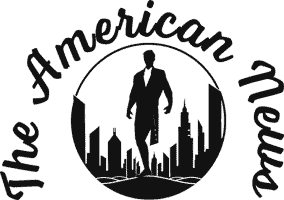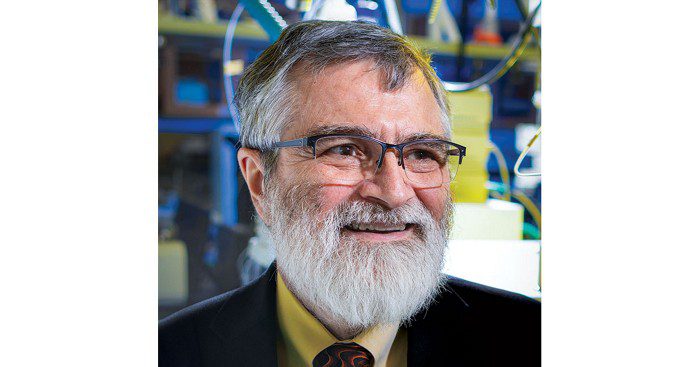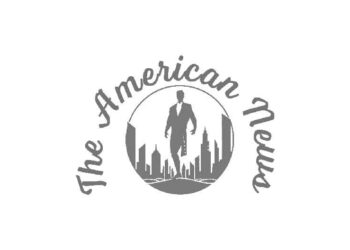Luis A. Colón is reshaping the scientific field by offering summer research opportunities and mentorship at the University at Buffalo (UB), where his analytical chemistry laboratory is based. For the past 30 years, undergraduates from the University of Puerto Rico in Cayey (UPR-Cayey), where Colón earned his undergraduate degree, have come to UB to conduct research. Many of those students return to UB for their graduate studies under Colón’s wing. The program has started to be replicated at other universities. In 2015, in recognition of the program and his mentorship at large, he received the Presidential Award for Excellence in Science, Mathematics, and Engineering Mentoring from President Barack Obama, and this year he won the American Association for the Advancement of Science Lifetime Mentor Award. Deysi Gómez Cholula spoke with Colón about the significance of curiosity, leaving home for a career in science, and perseverance in research.
This interview was edited for length and clarity and was partially translated from Spanish.
Luis A. Colón
HOMETOWN: Cidra, Puerto Rico
EDUCATION: BSc, chemistry, University of Puerto Rico in Cayey, 1981; PhD, analytical chemistry, University of Massachusetts Lowell, 1991
CURRENT POSITION: State University of New York Distinguished Professor and A. Conger Goodyear Chair Professor of Chemistry, University at Buffalo
BEST PROFESSIONAL ADVICE I’VE RECEIVED: Embrace the things you are passionate about with all your energy, but be alert to recognizing what is too much, and learn to say no!
FAVORITE MOLECULE: Caffeine and sucrose. My father used to cultivate coffee and sugarcane. When I was very young, I recall asking him what made the cane taste so sweet, as I saw him sometimes putting a piece inside of his cup of coffee!
I AM: Latino and Hispano
Image Credit: Douglass Levere/University at Buffalo
▸Vitals
Luis A. Colón
▸ Hometown: Cidra, Puerto Rico
▸ Education: BSc, chemistry, University of Puerto Rico in Cayey, 1981; PhD, analytical chemistry, University of Massachusetts Lowell, 1991
▸ Current position: State University of New York Distinguished Professor and A. Conger Goodyear Chair Professor of Chemistry, University at Buffalo
▸ Best professional advice I’ve received: Embrace the things you are passionate about with all your energy, but be alert to recognizing what is too much, and learn to say no!
▸ Favorite molecule: Caffeine and sucrose. My father used to cultivate coffee and sugarcane. When I was very young, I recall asking him what made the cane taste so sweet, as I saw him sometimes putting a piece inside of his cup of coffee!
▸ I am: Latino and Hispano
Deysi Gómez Cholula: I’m going to talk to you about your mentorship in a second, but first, tell me about your research. What initially inspired you to pursue a career in analytical chemistry? And what does your laboratory group do now?
Luis A. Colón: When I was little, I was very curious. I was very interested in how things worked, what the composition of matter was. And I have always been intrigued by measuring things.
Then, before I went to graduate school, I went to work for a pharmaceutical company. I had a very great appreciation for how important chemical analysis was, particularly for drug discovery and quality control. So when I went to graduate school, I focused on developing technology and methods for chemical analysis, specifically using separation techniques.
I decided to continue in that area, trying to overcome problems of existing technology.
DGC: In my research on photocatalysts for hydrogen production, I am exploring new characterization techniques; innovating is daily work. What future advancements do you see in chemical separation techniques and technologies?
I saw the need to increase diversity in the chemical sciences, particularly bringing Hispanics to chemistry.
LAC: Sustainability is very important. Here we are contributing by developing new methodologies based on supercritical fluid chromatography. This is a separation technique that basically will decrease the use of organic solvents, which can be toxic, as waste in chemical analysis.
Current efforts in my research laboratory are centered on the synthesis and properties of these materials that are hybrid silicates that can be used for separation. One application is, for example, the isolation of solutes that are found at concentrations too low for chemical analysis, such as environmental pollutants, like PFAS [per- and polyfluoroalkyl substances], or trace compounds in biofluids.
DGC: How do you find the time to balance your research with your mentorship work?
LAC: I think that mentoring and research go hand in hand. I see that it’s all for the advancement of science.
When I do my mentoring, it’s intentional, meaning I intend to mentor the person as well as advance the research. It’s not that I have to exert extra effort that drives me away from research.
DGC: Well, it sounds like a lot of effort. You’ve been leading a program to bring UPR-Cayey students to UB for almost 30 years. What inspired you to start the program?
LAC: A few things. First, I went to the UPR-Cayey as a student, and I knew the needs that they had [there] because I did not have certain opportunities and resources to prepare to go to a research graduate program. That’s perhaps why I didn’t go to graduate school right away.
Also, I saw the need to increase diversity in the chemical sciences, particularly bringing Hispanics to chemistry. When I first came here, I was the very first Hispanic person to be hired as a faculty member in the department of chemistry. There was not a single PhD or master’s student graduating from chemistry that was a Hispanic person.
All of those things somehow melded together and inspired me to reach out and establish a relationship with UPR-Cayey and try to provide experiences for undergraduate students.
DGC: How has the program grown and evolved since its inception in the 1990s?
LAC: In the mid-’90s or so, I got my first student from Puerto Rico. That student had a good experience, and she went back and spread the word. Later on, other faculty showed interest because we started to get graduate students from UPR-Cayey applying here and coming to the program.

Deysi Gómez Cholula
HOMETOWN: San Vicente Piñas, Mexico
EDUCATION: BSc, chemical engineering, National Autonomous University of Mexico, 2014; MSc, chemical sciences, Autonomous Metropolitan University, 2021
CURRENT POSITION: PhD candidate, chemical science, Francisco Javier Tzompantzi Morales’s ecocatalysis laboratory, Autonomous Metropolitan University
FAVORITE ELEMENT: Hydrogen. It is found throughout the universe, and I am currently working on producing this element from water splitting via photocatalysis.
NICKNAMES: My mom calls me Deysita or Margarita; my dad, Nachita; my sister Roxana calls me Perochita or hermanita; my sister Sendi calls me Dey; my brother Wilbert calls me Nana; and my brother Arturo calls me Mi Negrita.
I AM: An Indigenous Oaxaqueña woman—my paternal grandfather belonged to the Amuzgos, or Tzjon Non.
Deysi Gómez Cholula’s current work focuses on the synthesis of photocatalysts for hydrogen production. Additionally, Gómez Cholula is passionate about photography, is an enthusiast of physical training, and enjoys hiking in the mountains, forests, and parks.
Image Credit: Travis Shane Domanski
▸Vitals
Deysi Gómez Cholula
▸ Hometown: San Vicente Piñas, Mexico
▸ Education: BSc, chemical engineering, National Autonomous University of Mexico, 2014; MSc, chemical sciences, Autonomous Metropolitan University, 2021
▸ Current position: PhD candidate, chemical science, Francisco Javier Tzompantzi Morales’s ecocatalysis laboratory, Autonomous Metropolitan University
▸ Favorite element: Hydrogen. It is found throughout the universe, and I am currently working on producing this element from water splitting via photocatalysis.
▸ Nicknames: My mom calls me Deysita or Margarita; my dad, Nachita; my sister Roxana calls me Perochita or hermanita; my sister Sendi calls me Dey; my brother Wilbert calls me Nana; and my brother Arturo calls me Mi Negrita.
▸ I am: An Indigenous Oaxaqueña woman—my paternal grandfather belonged to the Amuzgos, or Tzjon Non.
Today, we have had, I don’t know, over 100 students that have benefited over the years. Many of them have gone to graduate school. Over 3,000 Hispanic students have completed master’s and PhD degrees at UB since I’ve been here, in the past 25 years or so.
Also very important is that other individuals, including some who have participated in this program, are replicating it at other institutions.
DGC: Do you have advice that you like to give young scientists who are considering moving far from their homes for a research opportunity?
LAC: Be curious, and be hungry for knowledge! Frustration in one experiment can lead to discoveries—don’t get discouraged.
Also, for people from Latin America who go to the US to work, the language barrier is one of the top things on their mind. They think that they might not be able to perform because of that. But I think that’s changing, and people are more tolerant now, finding different ways to ask questions or communicate.
DGC: I’m finishing up my PhD, and I’m always thinking about, if I do a postdoc, whether I should do it in Spain or in another place where they speak Spanish. So I see what an opportunity you’re giving students, ensuring that their first interactions are with someone who knows more than just English.
LAC: Establishing a relationship between students and the university or program in a familiar language was a big help. Students noticed that I spoke the language, and they asked questions that they would’ve been scared to ask otherwise because they were able to ask them in Spanish and get answers in Spanish. That motivated them and others around them; eventually, they became more comfortable with the language.
If you’re interested in doing a postdoc, first look for the research area that you like, where you think you can learn what you want to do. Then worry about the language and all that. You need to be encouraged to get past the thought of, “I’m not going to be able to speak English.”
DGC: That’s good to hear because my friends and I doubt ourselves too much. The only thing we see is the language.
LAC: What gives me confidence is that we know a lot more than we think we do. Don’t get discouraged; there are opportunities out there.
DGC: Thanks so much! What gives you the most satisfaction in your work as a mentor and educator, and can you share a success story of your students that is especially meaningful to you?
LAC: In general, I think every student that walks in my lab is a success story. I think they learn and they get an experience that in one way or another will shape their career and their life. Many of them have gone on to graduate school. Many of them have discovered that graduate school is not for them, which is also important.
DGC: As you reflect on your contributions to both science and education, what legacy do you hope to leave behind?
LAC: The students that have come through my lab, that’s the biggest legacy. My desire is, similar to how they were influenced positively here, they also continue influencing others.
It’s like a spiderweb. It starts at a point, then expands, influencing a few, and those few influence others. And we can see how we create a better world for advancement of science and education.
More online
Translations information goes here.
Chemical & Engineering News
ISSN 0009-2347
Copyright © 2024 American Chemical Society
Source link : http://www.bing.com/news/apiclick.aspx?ref=FexRss&aid=&tid=66edb103d7bb417f816acac77ed93497&url=https%3A%2F%2Fcen.acs.org%2Fcareers%2Fdiversity%2FLuis-A-Colon-spent-decades-increasing-diversity-in-the-chemical-sciences%2F102%2Fi29&c=7785216120283372942&mkt=en-us
Author :
Publish date : 2024-09-20 06:22:00
Copyright for syndicated content belongs to the linked Source.









